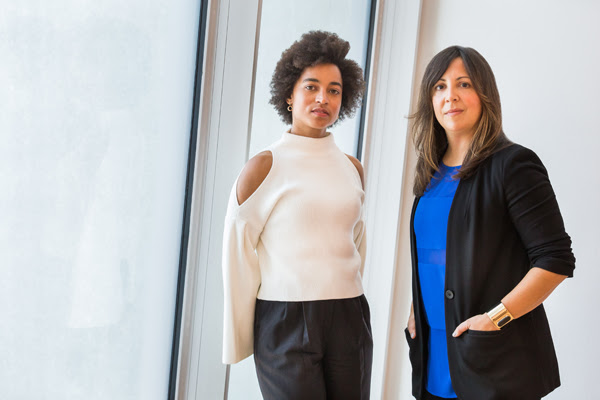NEW YORK, December 13, 2017—The Whitney Museum of American Art announced today that the 2019 Whitney Biennial will be co-curated by Jane Panetta and Rujeko Hockley, members of the Museum’s curatorial staff. The Whitney’s signature survey of the current state of contemporary art in the U.S., the Biennial goes on view in May 2019. This will be the 79th in the Museum’s series of Annual and Biennial exhibitions, inaugurated in 1932 by Gertrude Vanderbilt Whitney. The 2019 Whitney Biennial is presented by Tiffany & Co, lead sponsor of the Biennial through 2021.
In announcing the selection of the curators, Scott Rothkopf, the Whitney’s Deputy Director for Programs and Nancy and Steve Crown Family Chief Curator, said: "Jane and Ru are two of the most compelling and engaged curatorial voices of our moment, with broad and sensitive instincts for artistic and cultural relevance. They are both passionate champions of emerging artists, while their more scholarly projects have shown keen insights about making history feel alive in the present. I’m delighted to see two more Whitney curators put their mark on our signature exhibition."
Adam D. Weinberg, the Whitney’s Alice Pratt Brown Director, noted: "The Biennial is a tradition that goes back to the institution’s historical roots while providing us with a barometer of the new. Pushing beyond what is comfortable, presenting diverse approaches to artmaking, and understanding that art can never be severed from the world at large have become the hallmarks of the Biennial. I eagerly anticipate the show that these two talented curators will organize in response to the dramatically shifting cultural, social, and political landscape of the present."
Hockley and Panetta commented, "We are thrilled to be collaborating on the forthcoming Biennial, particularly at such an historic juncture in our country and in our world. We are excited about the work emerging out of this complex moment and are honored to continue the Biennial’s long tradition of engaging with the most compelling artists, issues, and questions of our time."
| 
